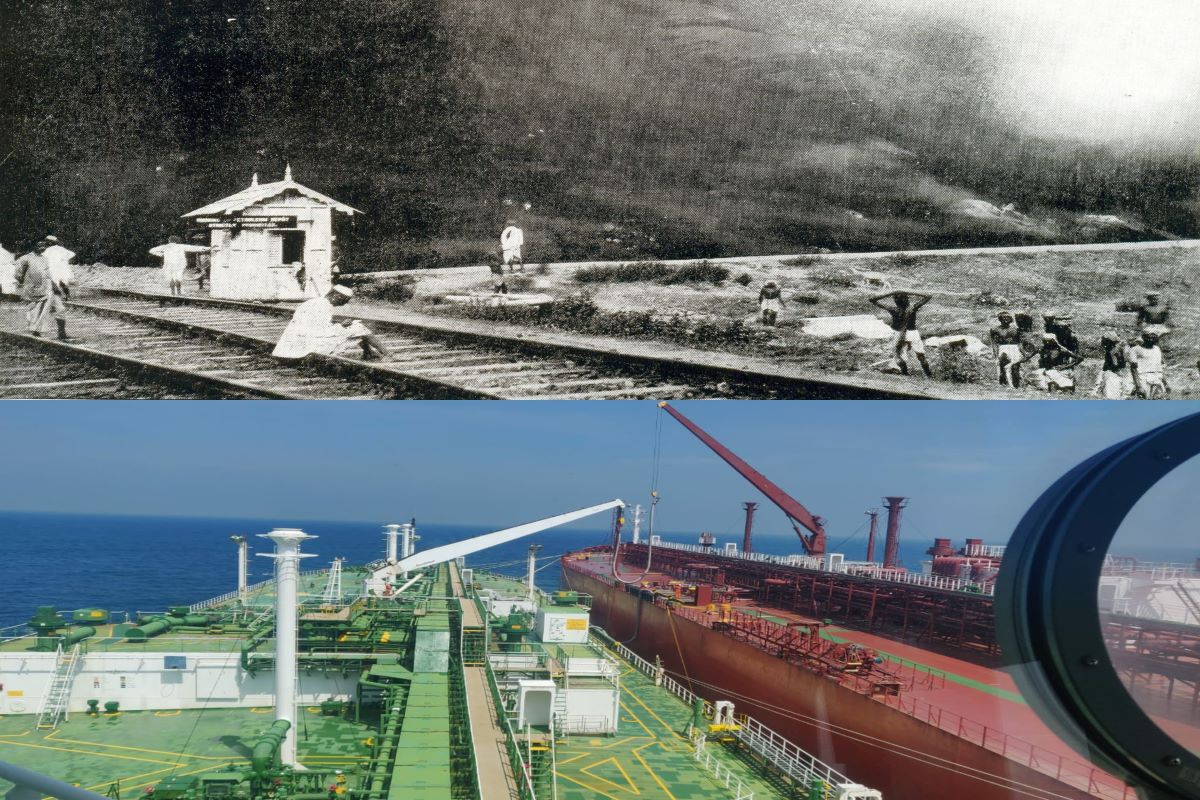Gujarat ATS, DRI seize heroin worth Rs 200 cr at Kolkata port
The DGP said that based on the information, a ATS team with DRI Jamnagar team were sent to Kolkata, where during the inspection it found some 12 gear boxes with white marks on it.
Disasters and comeback have been a constant companion for India’s oldest port. In 1903 a major fire gutted down an entire shed in the oil depot at Budge Budge, and the Port authority, learning from its mistakes, redesigned the installation, which has been utilised through the century to great benefit by all the major public sector as well as private oil companies.

(top-bottom) 1903 fire at Budge Budge oil depot, ship to ship LPG operation at Kolkata Port in 2021
Unlike its sesquicentennial in 2020 which Kolkata Port commemorated with the first Republic Day Tableau and inauguration of the LED makeover of Howrah Bridge by the Prime Minister, its celebration of the 151st year has been rather pale with the coronavirus still holding sway.
However, the Syama Prasad Mookherjee Port (SMP) was able to make it special once again as for the first time it handled a ship to ship (STS) operation of LPG in an Indian port. The SMP announced that overcoming the low draft challenge of this riverine port, the first-ever STS Operations of LPG in Indian Coast was undertaken by BPCL on 15 October.
The vessel MT Yushan with a parcel load of 44,551 MT cargo carried out STS operation with the vessel MT Hampshire at the Sandheads. This scripted history for the port while the instant STS operations are expected to open new business potential not only for the country’s oldest riverine port but also benefit the trade and country as a whole in terms of saving substantial foreign exchange, said Vinit Kumar, chairman, SMP, Kolkata.
Advertisement
However, recalling the history of oil handling at Kolkata Port, Mr Goutam Chakraborty, the port’s heritage advisor highlighted that Kolkata port has been importing oil for colonial India since the middle of the nineteenth century. The Garden Reach Jetties which preceded King George Docks were once used for the storage of oil in casks and drums.
The mercantile community of oil importers, mainly led by Balmer Lawrie sent a memorandum to the then Lt Governor on 25 September 1882 for the creation of a dedicated and safe facility for storage and handling of oil. This led to the Port selecting the Budge Budge wharves for the construction of dedicated oil jetties, a facility that proved to be immensely beneficial to the economy of the hinterland till Haldia took over.
Disasters and comeback have been a constant companion for India’s oldest port. In 1903 a major fire gutted down an entire shed in the oil depot at Budge Budge, and the Port authority, learning from its mistakes, redesigned the installation, which has been utilised through the century to great benefit by all the major public sector as well as private oil companies.
The necessity of an oil jetty at Haldia came up in the mid 1960s, as the Barauni refinery, set up in 1964 with support from the Soviet Union, was required to be serviced by tankers through the nearest port.
The construction of the first oil jetty at Haldia commenced in 1965. Interestingly, although Haldia Docks officially opened to world shipping in 1977, its first oil jetty began operations with the loading of 6,500T of Motor Oil on the IOC-chartered tanker Ampuria on 12 August 1968. The motor spirit was transported from Barauni refinery, recalled the heritage advisor.
Advertisement